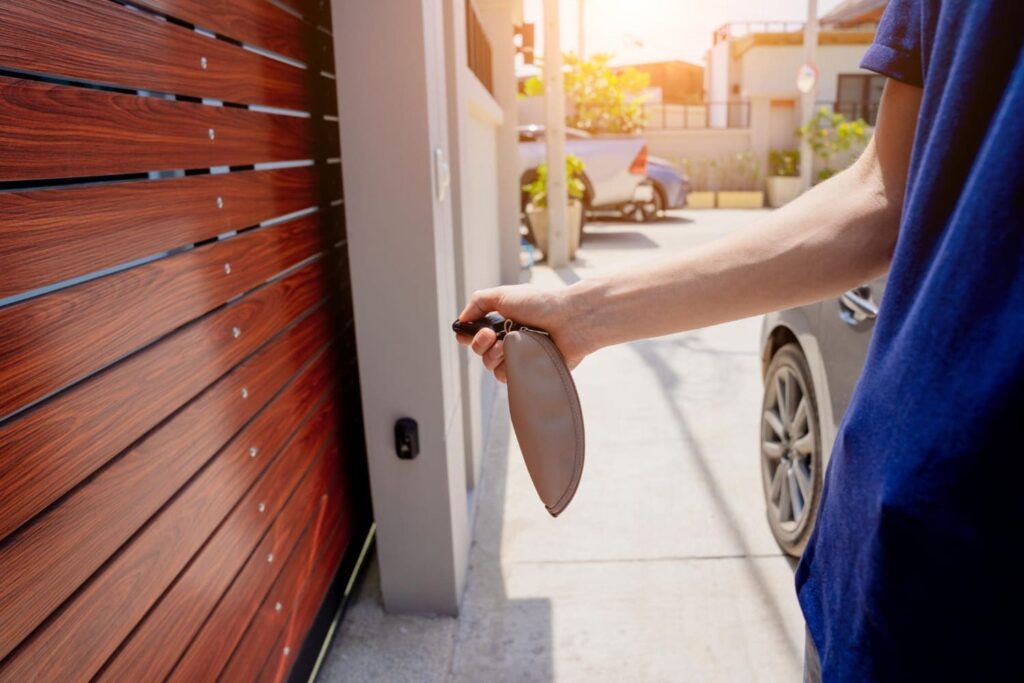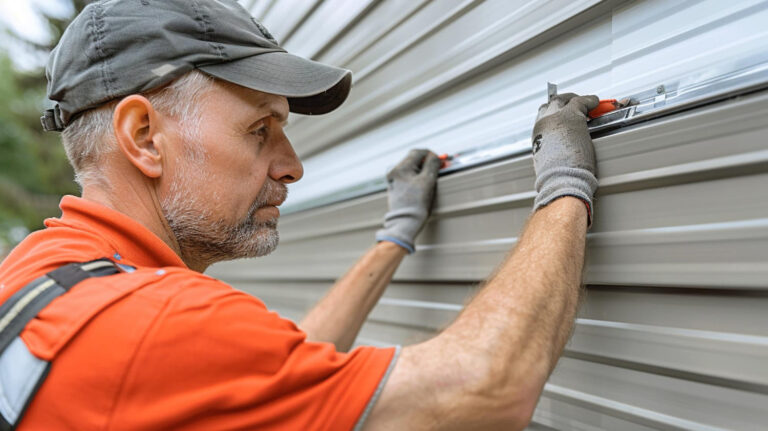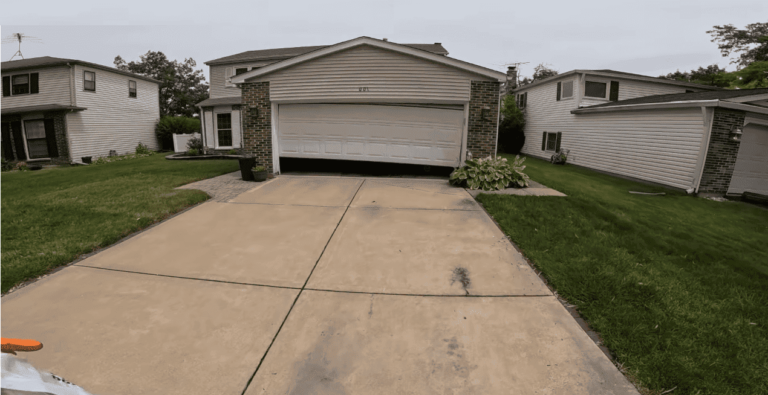Essential elements of our houses, garage doors provide security, convenience, and weather protection. They can, however, occasionally behave erratically, frustrating and inconvenining people. A typical problem homeowners run across is the garage door closing only as the wall button is depressed. There are several possible reasons for this problem, hence knowing them will enable you to properly solve it..
1. The Role of Safety Sensors
Problems with the safety sensors are the most often occurring cause of a garage door only shutting when the button is pressed down. These sensors are close to the floor on either side of the garage door. Their main purpose is to identify items in the path of the door, therefore preventing the door from shutting should something obstruct it. Unless the wall button is depressed, misaligned, unclean, or damaged sensors will prohibit the door from shutting..
- Misaligned Sensors: To operate as they should, the sensors must be exactly aligned. Should one of the sensors be somewhat misaligned, it will alert the garage door opener to cease closing. Make sure both sensors are directly facing one other to correct this. You can help align them with a level or a laser pointer.
- Dirty or Obstructed Sensors: Dirt, dust, or cobwebs on the sensor lenses will cause them to malfunction. Often the problem is resolved by gently wiping the sensors with a soft cloth. Make sure the path of the sensors is free from physical obstructions as well, such a lawn hose or tool.
- Damaged Sensors: Over time, sensors may wear out or develop damage. Should cleaning and alignment of the sensors be ineffective, you may have to replace them.
2. Inspecting the Wiring
The wire linking the sensors to the garage door opener also could be another possible offender. Sensor problems may result from the cables becoming disconnected, broken, or loose over time.
- Loose Connections: Examine the connections at the garage door opener as well as the sensors. Should the wires be loose, firmly rejoin them..
- Damaged Wiring: Examining the wire for any wear—such as fraying or cuts—helps you to Should the wiring prove damaged, it will have to be replaced. Sometimes the damage may be limited, and you can splice in a fresh wire portion to address it.
3. Bypassing the Safety Sensors
Although long-term use of bypassing the safety sensors is usually not advised, it can assist identify the issue. Disconnecting the wires from the garage door opener will momentarily avoid the sensors should you believe they are malfunctioning. This will let the door to close without depressing the button. This should only be done for testing though, as skipping the sensors removes an essential safety element.
4. The Garage Door Opener’s Logic Board
Should the sensors and wiring be in good condition, the problem may be found in the logic board of the garage door opener. Controlling all the garage door opener’s operations, the logic board is its brain. Should the board fail, the door may act erratically—that is, only closing when the button is depressed.
- Resetting the Opener: Sometimes reseting the garage door opener will help with logic board problems. Unplug the opener from the power supply for a few minutes then plug it back in to reset it.
- Replacing the Logic Board: Should reseting the opener fail, the logic board may have to be replaced. This is a more sophisticated repair that might need for expert help.
5. Adjusting the Door’s Force Settings
Force settings on garage door openers control the pressure the opener employs to close a door. Should the force setting be too low, the opener may stop shutting the door should it run into even a minor resistance—such as a misaligned track or a worn-out spring.
- Increasing the Force Setting: Finding the force adjusting knobs on your garage door opener requires reading the instructions. To raise the closing force, turn the knob only slightly. Be careful not to set it too high since this can cause the door to close with too much force, thereby maybe harming the door or the opener.
6. Checking for Obstructions in the Tracks
Sometimes the problem may be a track obstruction rather than anything pertaining to the sensors or the opening itself. A twisted track or even dirt and trash could cause the door to close improperly.
- Cleaning the Tracks: Examining the tracks for any trash, then gently wiping them with a moist cloth will help you Make sure the tracks free of any obstacles..
- Straightening the Tracks: Using a rubber mallet, you could be able to straighten tracks if they are twisted or misaligned. Should the damage be serious, though, you could have to replace the tracks..
7. Consulting a Professional
It could be time to see a professional if you have followed all the above guidelines and the garage door still closes just when you press down the button. A qualified expert can more quickly diagnose and resolve a complicated garage door system problem.
Although it can be annoying, a garage door that only closes when the button is pressed down usually results from quite simple problems. Usually you can fix the problem on your own by looking into the safety sensors, wiring, force settings, tracks, and tracks. If the issue continues, nevertheless, be sure not to hesitate to consult a specialist. Frequent garage door system maintenance also helps to avoid similar problems in the future, thereby guaranteeing that your garage door runs safely and without problems.





